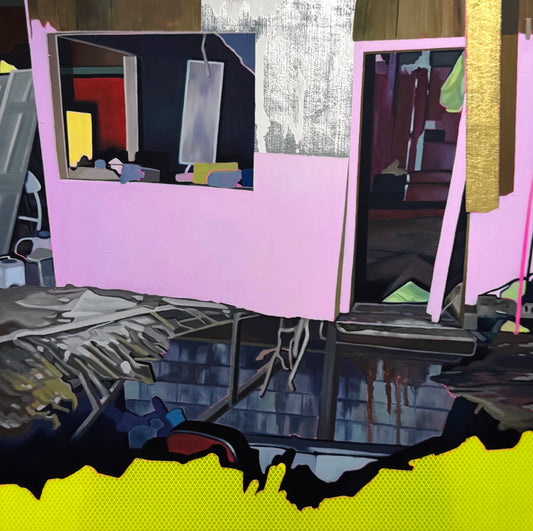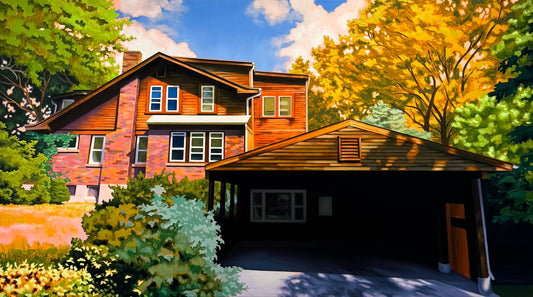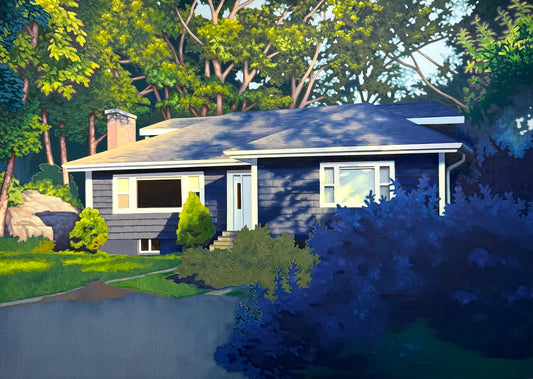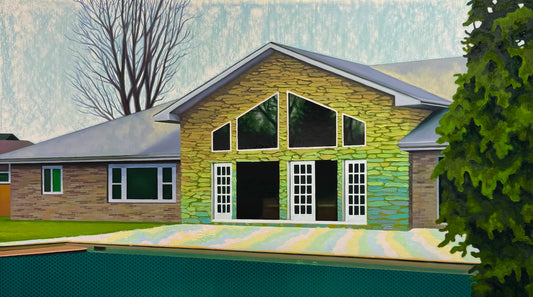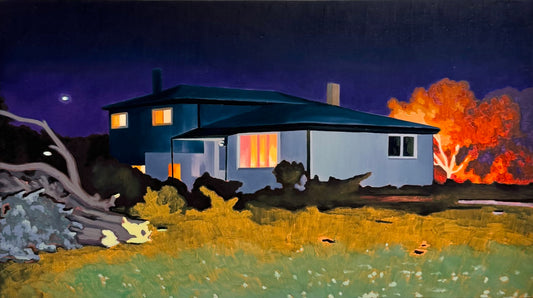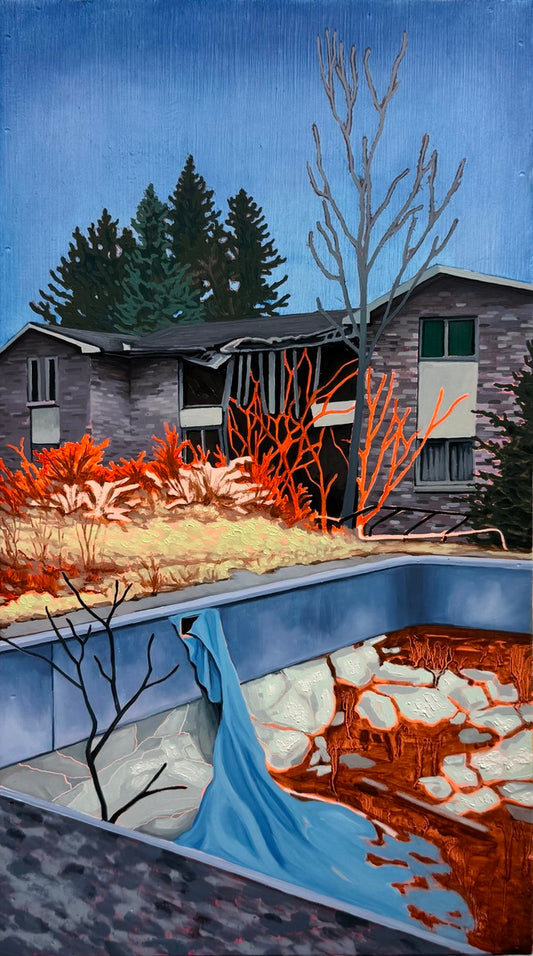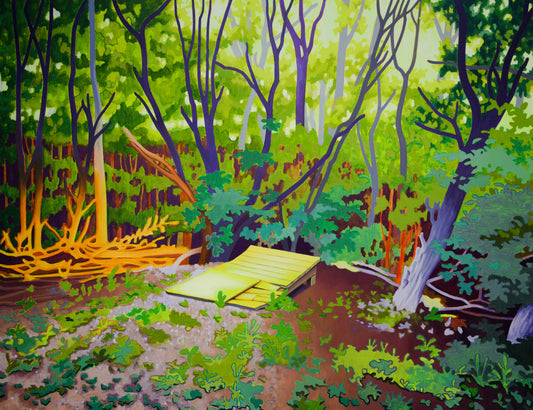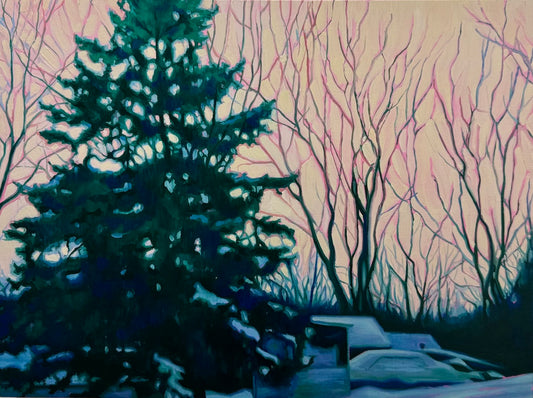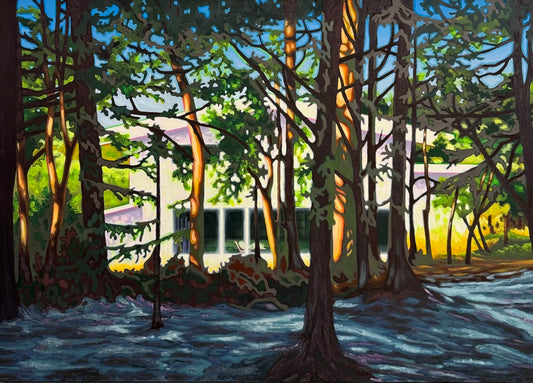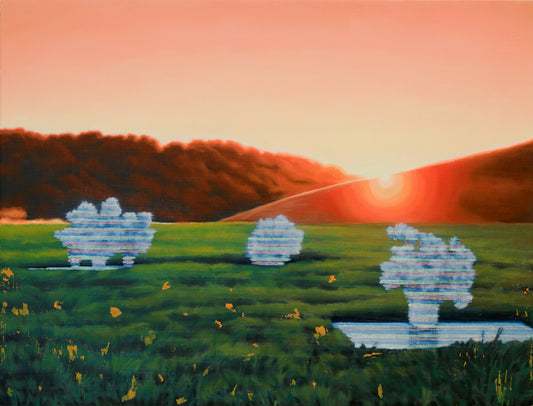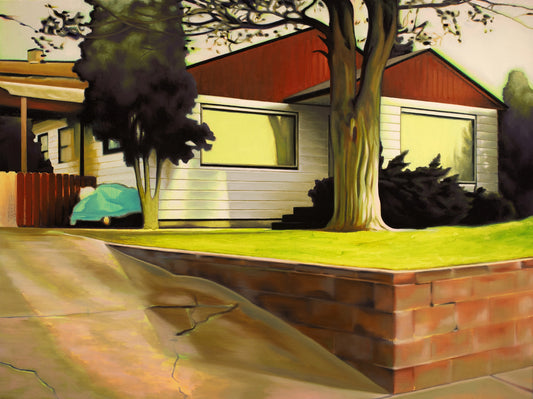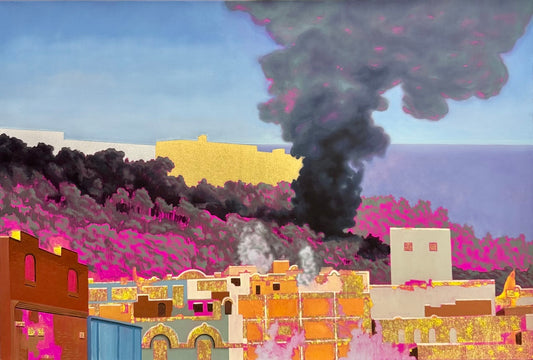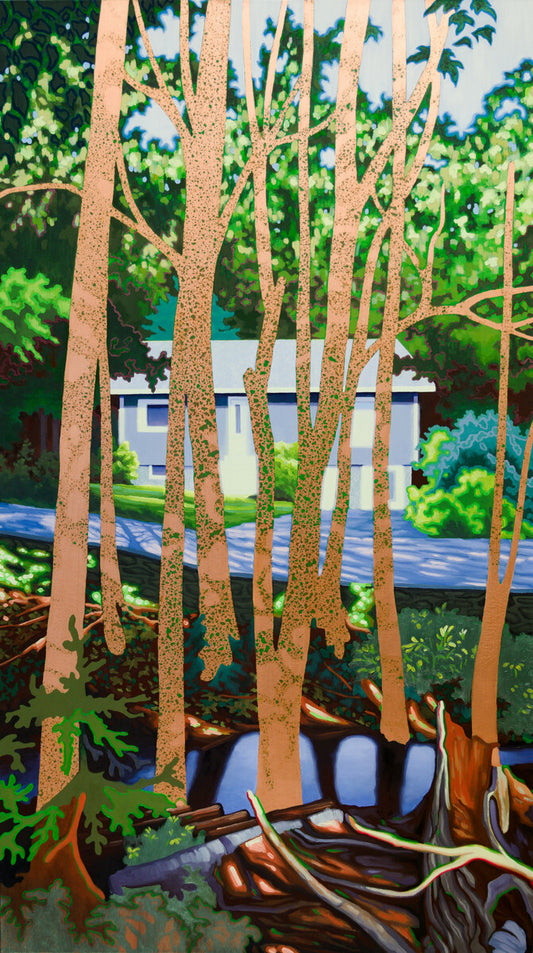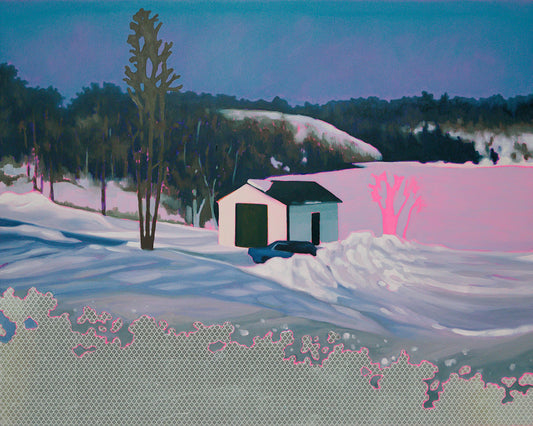Vacant Possession describes the ideal condition in which a new tenant or property owner inhabit a residence: free from occupants, belongings, and other encumbrance of the past, such that they can fully and neutrally occupy the new dwelling. But every home has its ghosts. One cannot encounter a place empty of its past. Parents come to understand this quickly: the host of ambitions, inheritances, and unresolved issues of our own childhoods can brace - or break - the next generation. As parents, we are our children’s homes, at least for a time. How do we undertake renovations, exorcise the spectres of the past and cultivate a strong framework? Where do the four walls of a house or apartment end, and the boundaries of a home, in all its complexities, begin?
Expanding on his existing methods and materials rooted in the experiences of parenthood, Takashi Hilferink continues to search for the dynamics that usefully differentiate a house from a home. His recent paintings intensify his concerns with the similarities between homemaking and “worldbuilding” – a practice common to writers, gamers and artists alike, in which beliefs, speculations and dreams are mustered in the service of elaborate, alternative realms. Children often imagine settings to contain and nurture their feelings and questions about the world. But at some point as adults, we appear to abandon those sensitivities in favour of pragmatism or “realism” – sometimes, at the expense of our imaginations. These paintings offer remedial worlds in which viewers (whatever their age) can reckon the risks and ramifications that prompt the inurement of adulthood, with the vernal zeal, wiliness and wonder that are required to imagine a better world.
Takashi’s work draws from his children’s pretend play and emotional metabolisms, as well as recollections of, and reconciliations with, his own childhood. He also borrows palettes and premises from his and his kids’ childhood media, including The Wolf Suit, The Little Engine That Could, Studio Ghibli films, Resident Evil video games, Mr. Rogers’ Neighborhood and Unsolved Mysteries.
Expanding on his existing methods and materials rooted in the experiences of parenthood, Takashi Hilferink continues to search for the dynamics that usefully differentiate a house from a home. His recent paintings intensify his concerns with the similarities between homemaking and “worldbuilding” – a practice common to writers, gamers and artists alike, in which beliefs, speculations and dreams are mustered in the service of elaborate, alternative realms. Children often imagine settings to contain and nurture their feelings and questions about the world. But at some point as adults, we appear to abandon those sensitivities in favour of pragmatism or “realism” – sometimes, at the expense of our imaginations. These paintings offer remedial worlds in which viewers (whatever their age) can reckon the risks and ramifications that prompt the inurement of adulthood, with the vernal zeal, wiliness and wonder that are required to imagine a better world.
Takashi’s work draws from his children’s pretend play and emotional metabolisms, as well as recollections of, and reconciliations with, his own childhood. He also borrows palettes and premises from his and his kids’ childhood media, including The Wolf Suit, The Little Engine That Could, Studio Ghibli films, Resident Evil video games, Mr. Rogers’ Neighborhood and Unsolved Mysteries.
*******
An adversarial childhood in Cincinnati, Ohio encouraged Takashi to move to Toronto, where he earned a BFA at York University. In 2021, he completed the MFA program at NSCAD University, where he now works as the Drawing and Painting Technician. His children are two and four years old, and regularly (if relentlessly) help him imagine new worlds, new ways to be, and new things to paint.
 Takashi Hilferink // VACANT POSSESSION
Takashi Hilferink // VACANT POSSESSION
